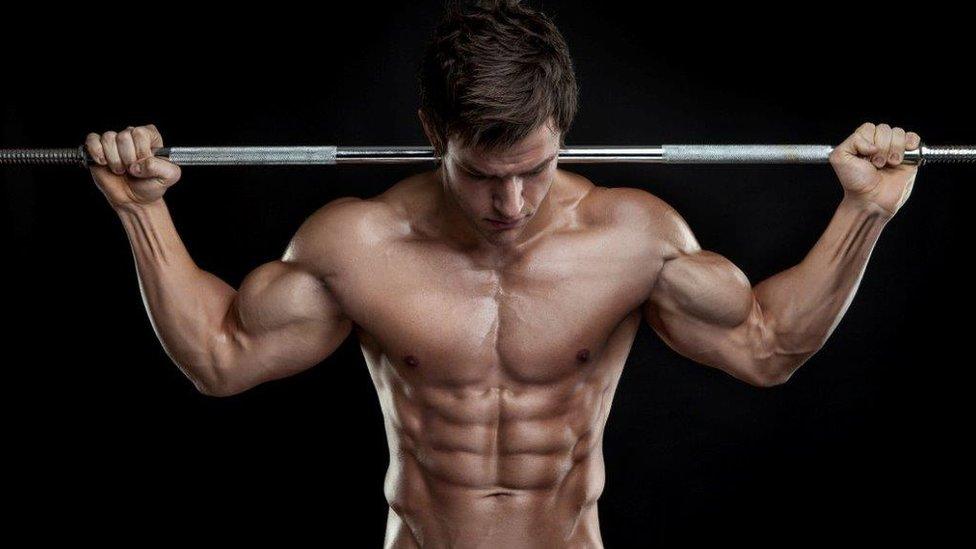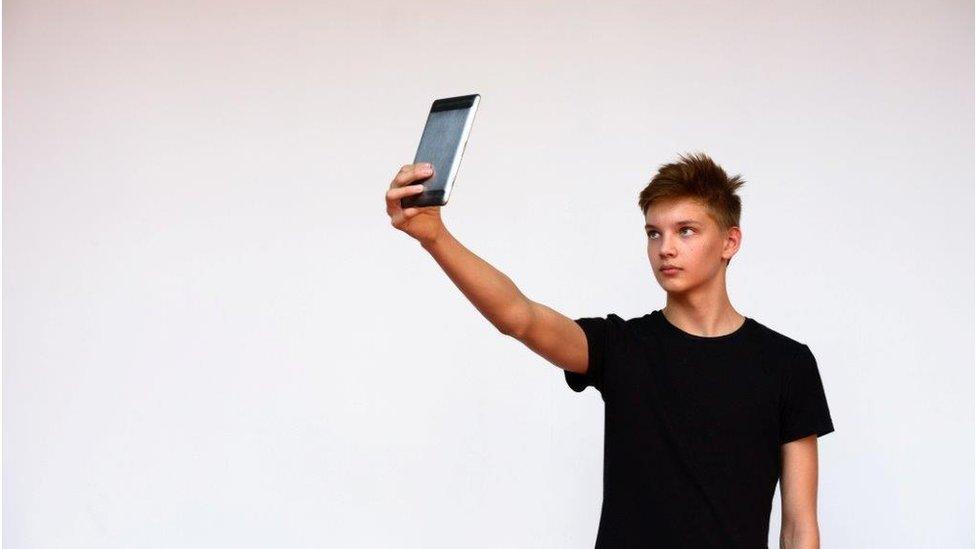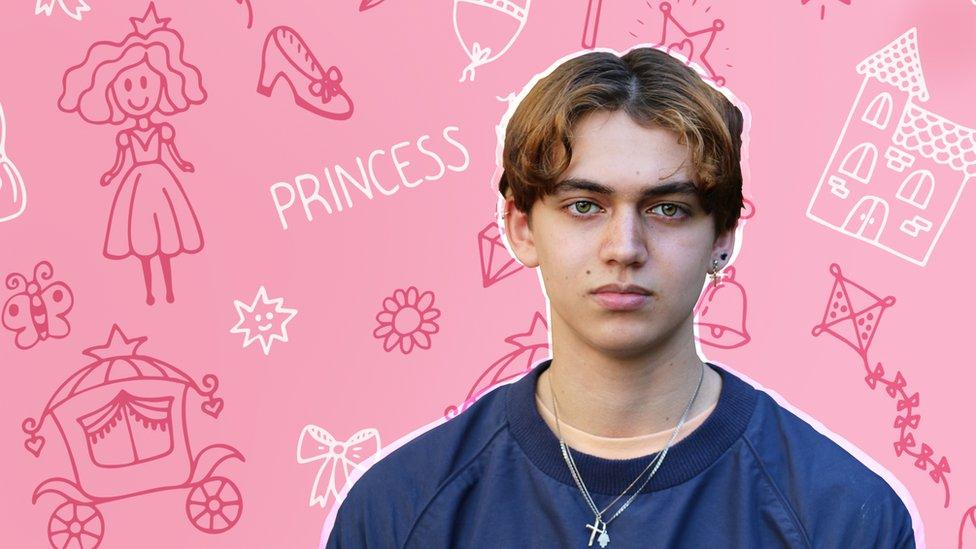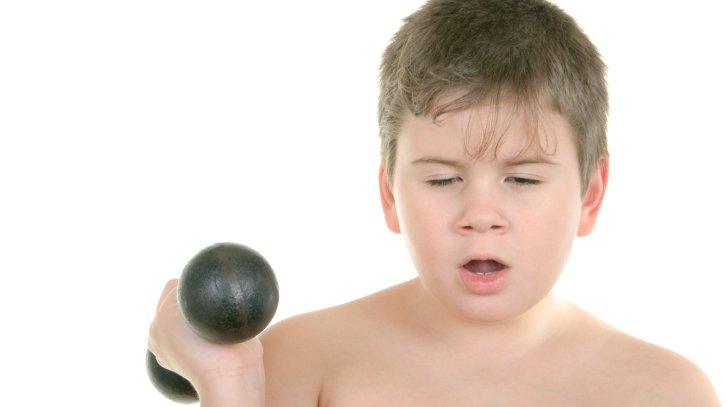Body image 'a problem for boys', says advertising think tank
- Published

Almost a quarter of the boys polled believed there was such a thing as a "perfect" male body
Eating disorders, dieting and extreme exercising are as much of a problem for UK secondary school boys as for girls, suggests a survey, external.
Of more than 1,000 eight- to 18-year-old boys polled, 55% would consider changing their diet to look better.
And 23% said they believed there was a perfect male body.
"Boys are increasingly worried about their appearance," said Karen Fraser, of the Credos, external advertising industry think tank, which conducted the survey.
Most of the boys polled saw eating disorders (56%) as an issue for both boys and girls.
And almost as many felt dieting (55%) and extreme exercising (48%) were gender neutral issues.
But despite this pressure, the boys polled found it hard to discuss their concerns:
56% struggled to talk to teachers
29% struggled to talk to parents.
"The relatively low awareness of boys' body image issues amongst parents and teachers, coupled with a culture of boys not discussing their worries, makes it a tough environment for boys to seek support," said Credos director Ms Fraser.
One teacher told the researchers bullying about physical appearance was often harder to sort out among boys.
"With girls, somebody says, 'You're fat.'
"The natural reaction is that the girl cries, the other girl feels guilty, and it gets sorted out.
"With boys there's a lot more banter.
"You can see they're often hurt, but the expectation is to laugh and shrug it off."

Boys' desire to look good was often prompted by social media, the report found
According to the survey, the biggest influences on boys to look good come from:
friends (68%)
social media (57%)
advertising (53%)
celebrities (49%)
More detailed questioning of the boys showed that while they were aware of the digital manipulation of images, they were shocked at how much models' looks were altered.
Many boys were aware of airbrushing but associated it with female images only.
The report recommends:
advice and education for boys, parents and teachers on identifying extreme body issues
initiatives to raise awareness of digital enhancement of male images in advertising
a more diverse range of male body shapes and sizes in advertising
The research is published alongside a government-supported media literacy toolkit, Media Smart, external, to help parents and teachers talk to children about how adverts are made and how they can affect self-perception.
"We have to recognise that advertising and the wider media play some part in shaping how young people feel about themselves, both positively and negatively," said Ms Fraser, who added that she hoped advertisers would engage further in the debate.
Equalities Minister Caroline Dinenage agreed advertising could have a big impact on young minds and said it was important to empower young people to take a more critical view of it.
"This toolkit is a fantastic resource that can support teachers and parents to talk about body image and gender stereotypes in relation to the adverts we see every day," said Ms Dinenage.
- Published9 May 2016

- Published23 March 2013
